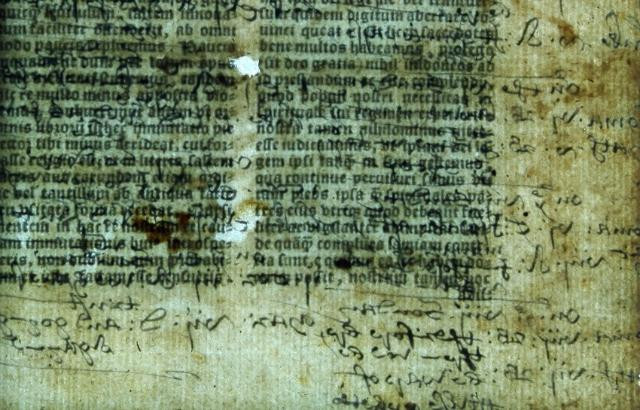Henry VIII's Reformation: Secret annotations discovered in England's first printed Bible

Hidden annotations have been discovered in England's first printed Bible through specialist 3D X-ray imaging. The annotations, found in a Bible first published in 1535 by Henry VIII's printer, had been copied from Thomas Cromwell's Great Bible but were covered up with a thick piece of paper in 1600.
The discovery was made by Eyal Poleg, a historian from Queen Mary University of London, who was examining one of the seven remaining copies currently housed at the Lambeth Palace Library in London.
While studying the Latin Bible, Poleg noticed heavy paper had been pasted over blank parts of the book. "We know virtually nothing about this unique Bible – whose preface was written by Henry himself – outside of the surviving copies ... The challenge was how to uncover the annotations without damaging the book," he said.
The Bible was analysed using a light sheet slid between beneath the pages. The researchers then took two images, one with the light sheet on and one with it off. This allowed them to see all of the annotations hidden beneath the printed text.

The resulting image revealed the annotations had been copied from Thomas Cromwell's Great Bible and that they had been written between 1539 and 1549 – some of the most turbulent years of Henry's reign. This period included the execution of Anne Boleyn, Thomas Moore and John Fisher, a move away from the Church of Rome and the suppression of the monasteries.
Poleg says the annotations suggest the Reformation was a gradual process, rather than a singular transformative event. "Until recently, it was widely assumed that the Reformation caused a complete break, a Rubicon moment when people stopped being Catholics and accepted Protestantism, rejected saints, and replaced Latin with English," he said. "This Bible is a unique witness to a time when the conservative Latin and the reformist English were used together, showing that the Reformation was a slow, complex, and gradual process."
He added: "The book is a unique witness to the course of Henry's Reformation. Printed in 1535 by the King's printer and with Henry's preface, within a few short years the situation had shifted dramatically. The Latin Bible was altered to accommodate reformist English, and the book became a testimony to the greyscale between English and Latin in that murky period between 1539 and 1549."
© Copyright IBTimes 2025. All rights reserved.






















